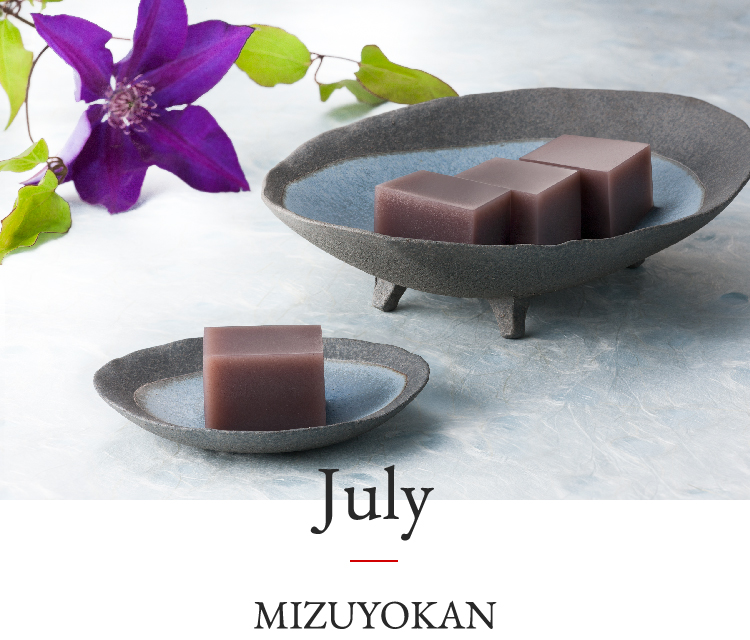

-
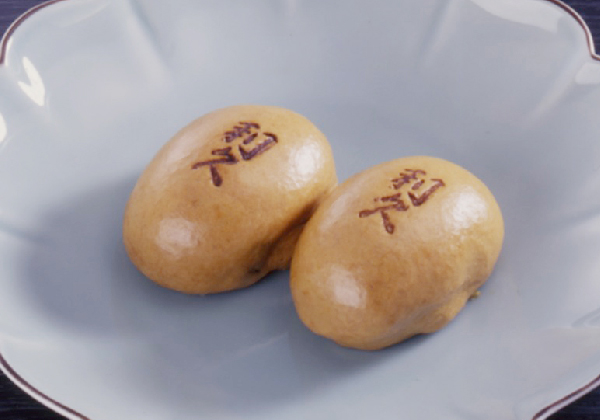
Cyamanju
A confection made by adding sugar, wheat flour, and rice flour to melted brown sugar, mixing them together to make a dough, wrapping bean paste in the dough, and then steaming.
-
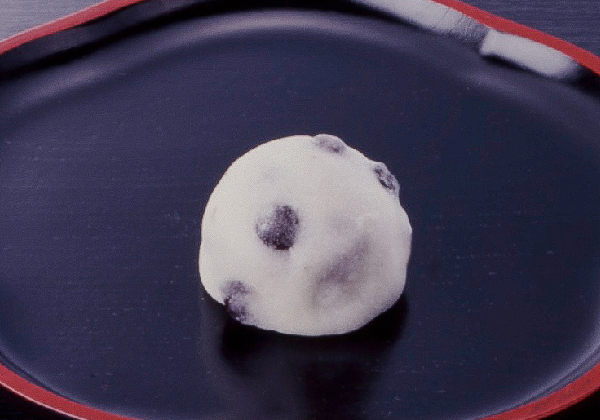
Daifuku
A confection prepared by wrapping adzuki tsubushian with a dough (mochi) made by pounding steamed glutinous rice until smooth. It is called Mamedaifuku when boiled red peas are mixed into the mochi dough.
-
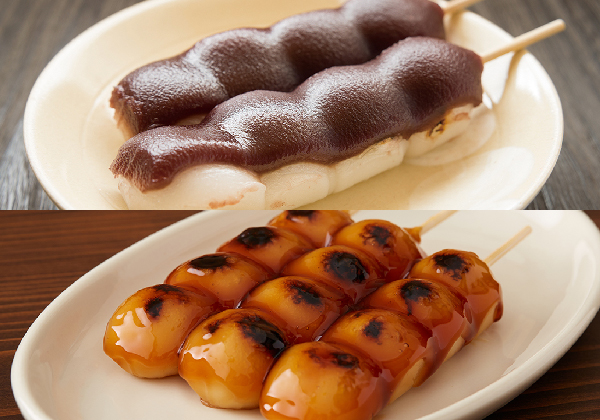
Dango
Dango are made by adding water to rice flour and then steaming the mixture. The mixture is then placed in a rice mortar and pounded into dough, which is then cut up into pieces that are rolled into balls. Ordinarily four balls are stuck onto a skewer.
・Andango…Made by covering skewered dango with adzuki koshian.
・ Mitarashidango…Made by grilling skewered dango and then smothering them with a syrup prepared by adding water to soy sauce, kombu dashi, sugar, and kudzu starch and then heating. -
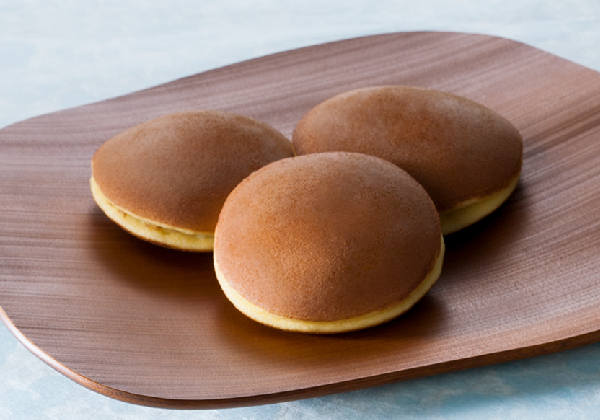
Dorayaki
A confection prepared by sandwiching bean paste between pancake-like cakes made by mixing eggs, sugar, honey, and water into wheat flour and then baking the mixture on a copper plate. It is said that the treat’s name comes from its resemblance to a gong-like percussion instrument called a dora.
-
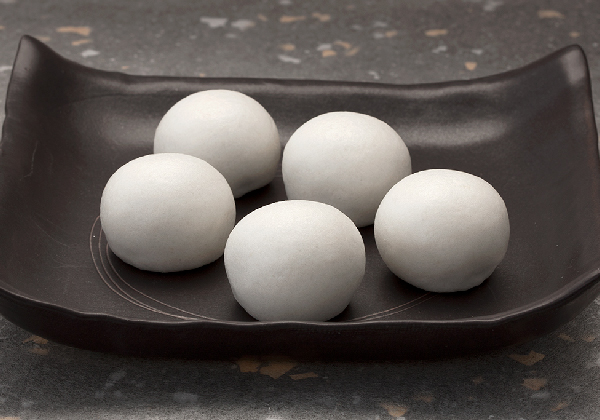
Joyomanju
A sweet made by mixing sugar and rice flour into grated Chinese yams to make a dough, wrapping bean paste in the dough, and then steaming. A distinctive feature of Joyomanju is that the plumpness comes from the yams, as no leavening is used.
-
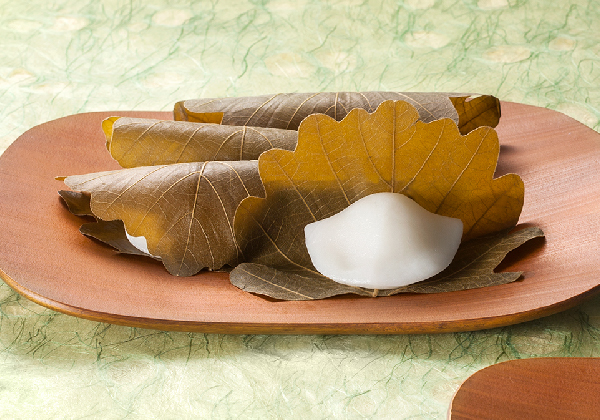
Kashiwamochi
Kashiwamochi is made by mixing water into rice flour and then steaming the mixture into an elastic dough. The dough is then placed in a rice mortar and pounded to make mochi. The mochi is spread out flat, shaped around bean paste, and then steamed again. The finished product is then wrapped in an oak leaf.
The process of steaming it twice gives it a pleasant fullness.
Kashiwamochi are available in stores from April until early May. -
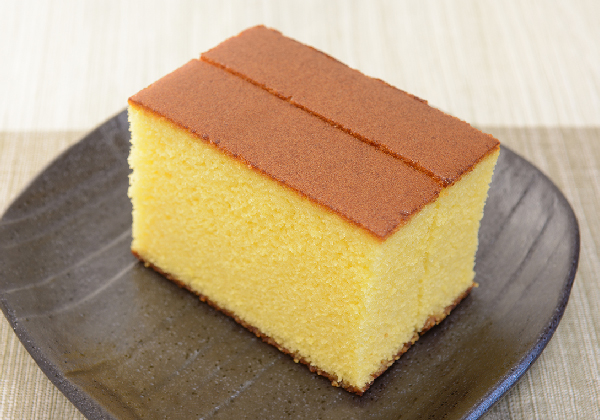
Castella
A confection made by thoroughly mixing together wheat flour, eggs, sugar, glucose syrup, honey, and other ingredients and then baking the mixture in an oven. Castella is known for a smooth and airy softness that comes from the eggs and baker’s skill, without the use of any leavening whatsoever.
-
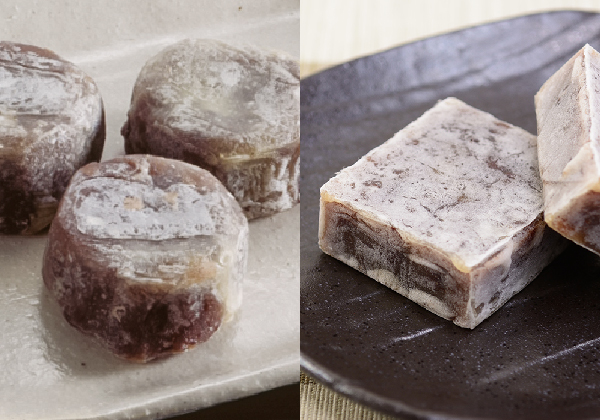
Kintsuba
A confection made by mixing large-grained adzuki beans (mame) that were marinated in molasses into adzuki koshian to make a bean paste (adzuki oguraan), wrapping the paste in a dough of wheat flour and water,and then baking the outsides on a copper plate greased with sesame oil.
・ Kakukintsuba…Kakukintsuba is made by adding agar-agar to adzuki oguraan, heating the mixture and then pouring it into a mold, and then cutting it into squares after it hardens. A dough of wheat flour and water is applied and then the squares are baked on all six sides on a copper plate. -
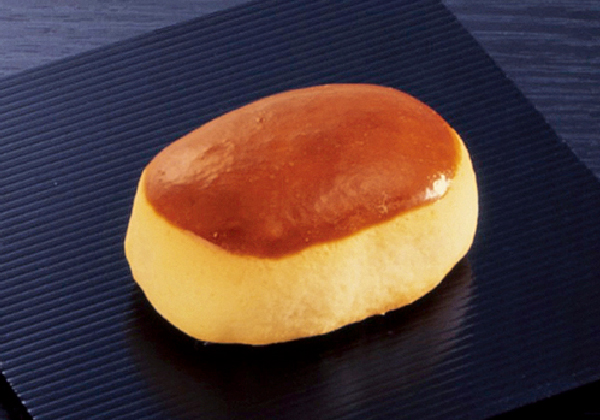
Kurimanju
This Manju is made by wrapping molasses-marinated chestnuts and bean paste in a dough prepared by mixing sugar, condensed milk, eggs, and other ingredients into wheat flour. Egg yolk is then applied to the top and the Manju is baked in an oven. Some variations are made with bean paste and a single molasses-marinated chestnut, and others are prepared by cutting up molasses-marinated chestnuts into small pieces and mixing them into the bean paste.
-
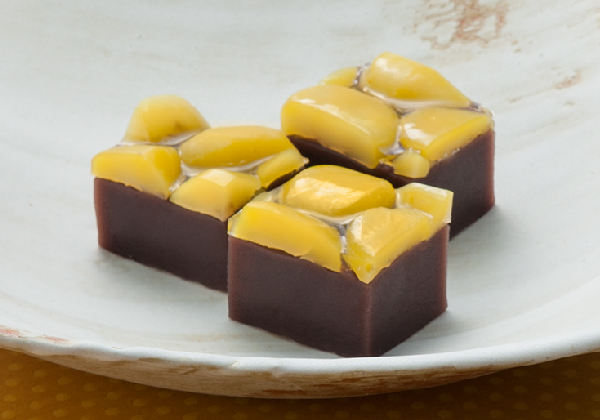
Kurimushiyokan
This confection is made by first preparing a dough by mixing wheat flour into adzuki koshian until viscous and then adding potato starch in water. The dough is then poured into a mold and steamed. Molasses-marinated chestnuts sliced in half are then embedded into the upper surface, and the Yokan is steamed again and cut into squares. In some variations, the molasses-marinated chestnuts are cut into small pieces and then mixed into the dough and steamed.
-
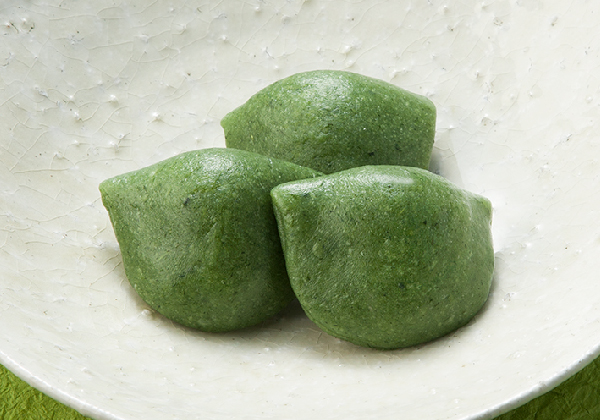
Kusamochi
This confection features bean paste wrapped in a pounded dough made by adding softly-boiled Japanese mugwort leaves, sugar, and water to steamed and pounded rice flour. The aroma of the mugwort and flavor of the mochi and bean paste come together to create a unique taste.
-
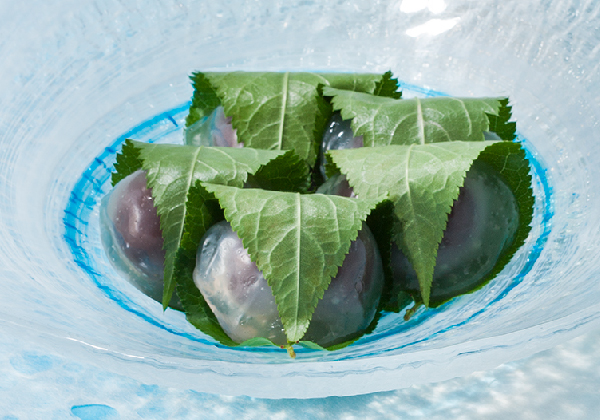
Kuzuzakura
Kuzuzakura is made by wrapping adzuki koshian in a dough prepared by adding water, sugar, and glucose syrup to kudzu starch dissolved in lukewarm water and then heated. The combination is then steamed until it becomes fully transparent.
It is sold from early to mid-summer. -
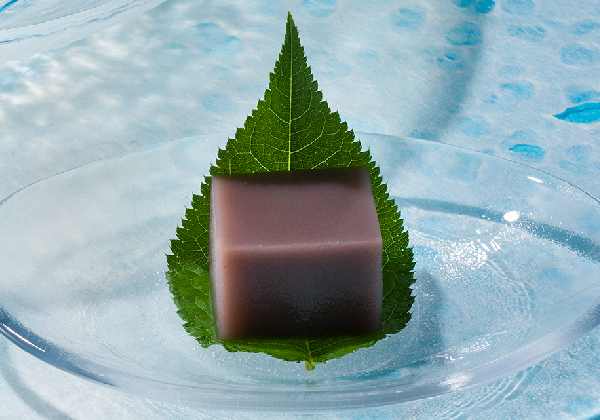
Mizuyokan
Like Yokan, Mizuyokan is made by dissolving agar-agar by adding water and heating it, adding adzuki koshian and then heating again, and then pouring the mixture into a mold to harden. However, it is different in that it has a softer finish that is achieved by increasing the amount of water used. It is mainly sold in summer.
-
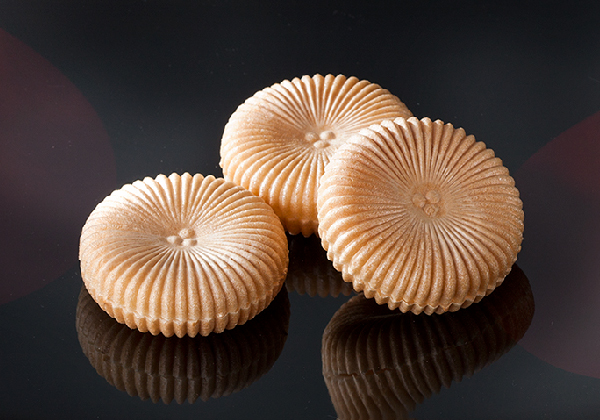
Monaka
This sweet consists of bean paste sandwiched between layers of mochi made from pounded rice that has been spread out thinly, placed in a mold, and baked. It is known for the harmony of its ingredients, with outside layers that stay dry even when surrounding moist bean paste. Various types of bean paste can be used inside, including adzuki koshian, adzuki tsubushian, shiroan, gomaan, and matchaan.
-
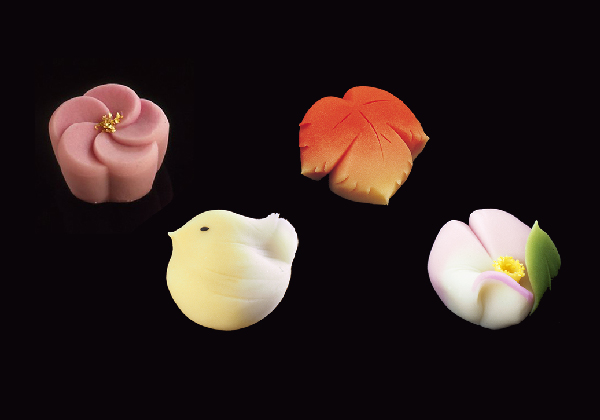
Nerikiri
Nerikiri features various designs depicting seasonal colors and shapes in a layer of nerikirian that was prepared by mixing Chinese yams and gyuhi into shiroan. The nerikirian surrounds a center of adzuki koshian. A confection arising from the sensibility and skill of the maker, it is representative of the creativity found in Wagashi.
-
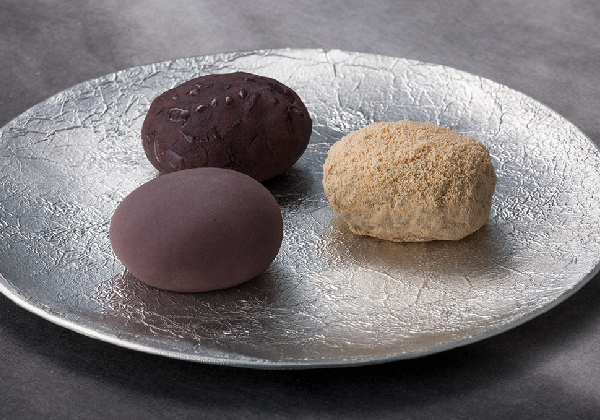
Ohagi
This sweet is made by stirring an amount of hot water into steamed glutinous rice, and then steaming the mixture for between 30 minutes and an hour. It is then rolled into a ball and completely covered with adzuki koshian.
In addition to adzuki koshian, some variations combine adzuki tsubushian, kinako (soybeans that have been roasted and ground into powder), and sugar as well as sesame and sugar. -
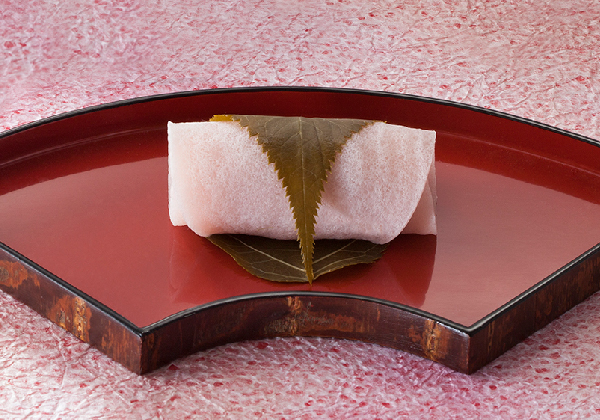
Sakuramochi
This confection is made with dough prepared by mixing wheat flour and sugar into refined rice flour that has been dissolved in water. The dough is baked on a copper plate and then wrapped around bean paste. Then a salted cherry tree leaf is wrapped around the outside. The fragrance of the salted cherry tree leaf transfers to the mochi and creates a unique aroma. Sakuramochi is made from March until early April.
-
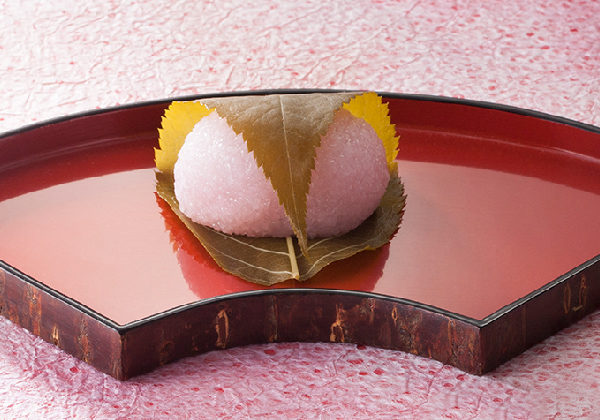
Sakuramochi(Domyoji-style)
This form of Sakuramochi is made with a dough prepared by mixing domyoji-ko flour and sugar with hot water. The dough is wrapped around bean paste, and a salted cherry tree leaf is wrapped around the outside.
Domyoji-ko flour is a rice flour made by steaming and drying glutinous rice and then grinding it to a course consistency. In ancient times, it was used as a preserved food and portable food. -
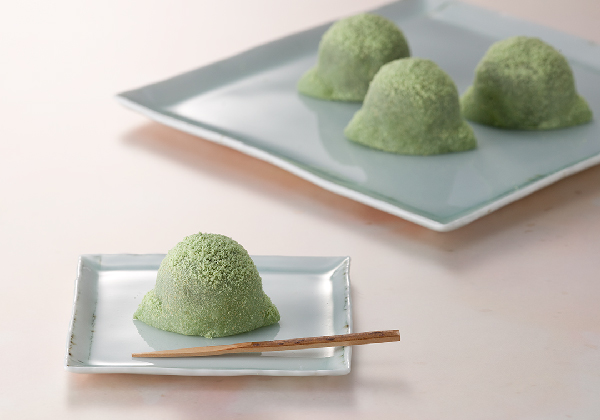
Uguisumochi
This sweet is made by adding water to rice flour and sugar and then heating. The mixture is kneaded (making gyuhi), which is wrapped around adzuki koshian. Both ends are tapered into points (depicting the shape of a Japanese bush warbler), and then green kinako (soybeans that have been roasted and ground into powder) is sprinkled all over.
-
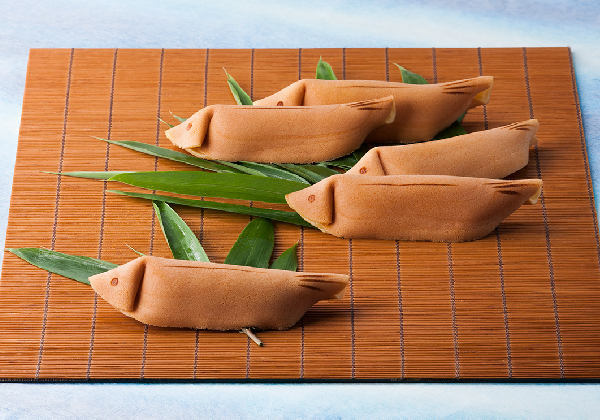
Yakiayu(Wakaayu)
A mixture of wheat flour, sugar, condensed milk, eggs, and other ingredients is baked in an elliptical shape on a copper plate. The resulting cake is wrapped around gyuhi (made by mixing and heating rice flour, sugar, glucose syrup, and water). It is then shaped into an ayu (sweetfish) with a branding iron. Yakiayu is sold in early summer.
-
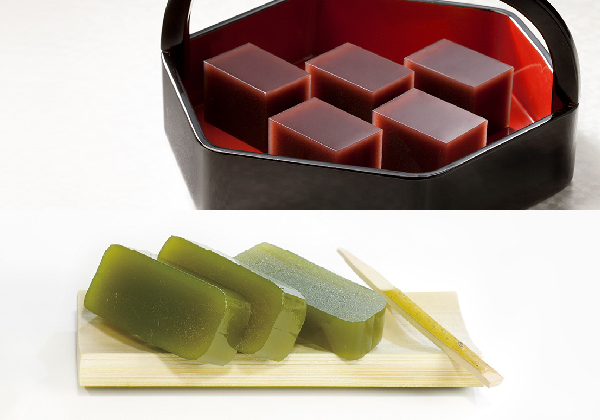
Yokan
This sweet, called Hon-neriyokan, is made by dissolving agar-agar by adding water and heating. Adzuki koshian is then added and the mixture is heated again before being poured into a mold to harden.
・Ogurayokan…Ogurayokan is made by adding sweet, stewed adzuki beans when kneading the Yokan.
・Machayokan…Matchayokan is made by adding green tea when making Yokan with shiroan.
・ Other types of Yokan…Various other types of Yokan are also made, including those made by adding chestnuts and persimmons. -
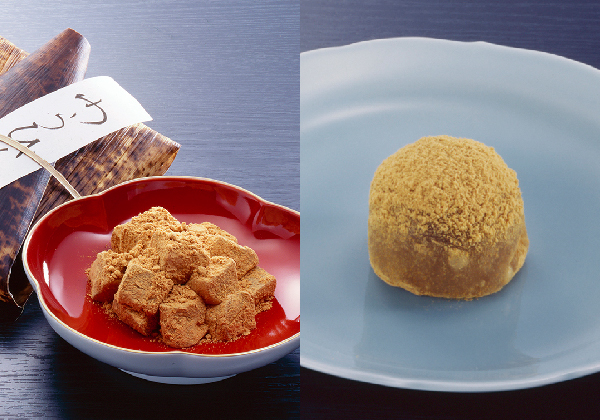
Warabimochi
Warabimochi is made by wrapping adzuki koshian in a steamed dough prepared by adding sugar and water to hon-warabiko (starch harvested from bracken roots) and then sprinkling everything with kinako (soybeans that have been roasted and ground into powder). In some variations, the dough is cut up and sprinkled with kinako, without adding adzuki koshian.
-
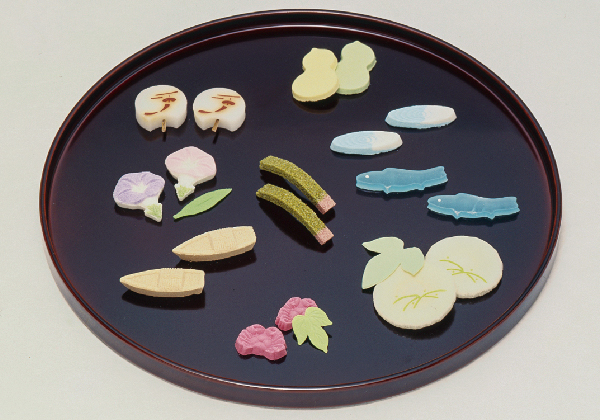
Wasanbonto-no-Uchigashi
This confection is made by adding a small amount of water to wasanbonto (a fine and flavorful sugar that is unique to Japan), rubbing the mixture together, packing it into a wooden mold, firmly pressing it, and then removing the finished sweets from the mold.
Although the sweets come in various shapes and colors, all are Wagashi that hightlight wasanbonto’s flavor.


 The wide world of
The wide world of